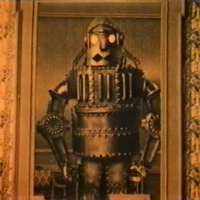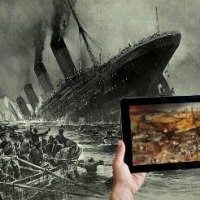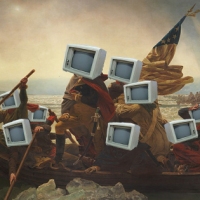Hey! Slow Down! – A review of Doug Hill’s “Not So Fast”
For much of human history there has existed a conflict between people and their tools. From the alphabet to the clock to industrialization to the early computer to the smart-phone every new technology has represented something of a disruption. Whether this change has been for good or ill (and whose good and whose ill) was often a question only asked in hindsight, if asked at all.
Indeed, that those inventing, disseminating, or celebrating a new technology often lacked a full understanding of what a given device would bring only served to exacerbate the conflict between a new technology and society. Indeed the very notion of “the technology and the society” was itself a complicated one as it seemed to suggest a degree of autonomy present in new technologies. Machines that, after all, originated with other humans. Thus, a focus on “the technology” often acted as a convenient way to disguise the human motivations behind a given device.
While new technologies have often been portrayed as unthinkingly synonymous with “progress” there has also been a storied history of individuals willing to question the so-called “advances” that amass with dizzying quickness. Sometimes these critiques take the form of a principled demand of “Not so fast!” a call that simultaneously challenges those introducing the technologies and those who too quickly accept them.
Not So Fast: Thinking Twice About Technology by the journalist Doug Hill is a work that does just that. Hill works to build a critique of the contemporary technological state of affairs whilst situating the current debates in a broader historical context that makes clear that the questions being asked of technology today are questions that humans have long debated. Yet the speed of technological change and the far reach of the new machines suggests that the need to question and the need to offer a real answer is perhaps more pressing now than in times past. For, as Hill puts it in the introduction:
“once technological systems are in place, they’re very difficult to budge, and not only for political reasons.” (Introduction)
Thus the need to call for critical inquiry must be part and parcel to discussions of technology, lest the critique appear after too many eyes and ears have already become addicted to the sugary promises of the new devices. Yet, “technological systems” must be understood as broader than simply specific “technologies” for the “systems” encompass not merely the devices but the people and power structures that are as much a part of the “technological systems” as the technologies themselves. The discussion in Not So Fast is divided into five parts that together serve to demonstrate the range of issues, promises, and dangers inherent in technological society.
Beginning with a contemplation of the “Classic/Romantic Split” Hill captures the longstanding history of seeing technology as a route to utopia, and at the same time captures the parallel belief that the route to technological utopia may actually represent burying the natural utopia beneath the paving slabs of a concrete dystopia. Hill captures the way in which questions about labor, the value of the liberal arts, the emphasis on narrowly defined rationalism, and the question of control are all issues that have a history that predates the current incarnations of these debates. Just as the discussion of whether generally oppressive technologies can be harnessed for libratory ends is a topic that has previously engaged counter-cultural forces (including some early pioneers in personal computing), though at times their technological hopes could be cast as dreaming up:
“the means of survival in the wake of technological catastrophe.” (Chapter 5)
Yet, throughout the history of the “Classic/Romantic Split” a troubling matter has repeatedly appeared rooted in the complex question regarding how to properly define technology. A matter of particular importance for, as Hill notes:
“Definitions of technology sometimes carry implications hidden to those not attuned to an argument in progress.” (Chapter 6)
And the presence of this “argument in progress” is made clear throughout the chapters in the second and third sections of Hill’s book (“The Water We Swim In” and “In Relationship With Machines”) wherein he draws up a far spanning map of the various views of technology including the impacts that technology has upon the citizens of technological society. It is a terrain in which it is easy to put too much emphasis solely upon “technology” but true to his emphasis on “technological systems” Hill is able to locate technology (as such) as only one part in a constellation of control that also includes science and capitalism. In constructing and considering a quartet of qualities central to the “nature of technology” (Chapter 7) Hill is further able to demonstrate the biases in technology that lend themselves to easy manipulation by those already in positions of power. Furthermore these systems of technological control may wind up constraining individual freedom, as:
“I can restrict my own use of technology, but I have considerably less ability to limit my exposure to the technology that surrounds me.” (Chapter 8)
Beyond this narrowing of choices, Hill also discusses the ways in which most individuals in technological societies find themselves disempowered even as technology promises to give them impressive new capabilities. Thus people often know relatively little about the way a device got to their hands (from design to construction [to eventual destruction]) and may have little inkling as to how to fix something once it breaks. Yet the quantity of technological tools becomes ever more encompassing such that ever more aspects of life are gradually “absorbed” by technology. Eventually people find their very hopes and dreams shaped by mechanical promises (hearkening back to the promise of utopia) and new technological ideas like “the singularity” emerge alongside powerful artificial intelligence and seductive virtual realities. As life embraces technology with greater speed so too does technology attempt to codify life as every detail of humanity is slowly reduced into more bland information to be fed to an algorithm (big data).
While questions of humans and technology are not new, the leaps being made in technological systems bring a range of particular challenges to the fore, question of if we are swiftly becoming “post-human.” In the current technological age it may well be that we are living through a moment of transition as the human species becomes increasingly transformed by its technologies as the boundaries between machine and human degrade. Yet these are still changes being wrought by “technological systems” not simply technologies (as such) and thus it is important to keep in mind:
“When you’re dealing with technologies that can potentially effect the well-being of millions of people, though, the scientists and technicians conducting the experiments are volunteering the rest of us to share the risk, and to share the cost of the damage if things don’t go as planned.” (Chapter 15)
The “technological systems” do not operate in isolation, their effects are far reaching and shape the entirety of the society (and indeed the world). And yet:
“Unless they cause some truly spectacular damage, chaotic events delivered courtesy of technology have become so commonplace today they hardly qualify as news.” (Chapter 16)
The decisions being made about the development of new technologies, as Hill writes, will have real and lasting consequences upon broad sectors of society and yet these are discussions that are closed from public input. Whilst the combination of powers within the “technological systems” has led to a steady fusion of state and corporate power such that “democratically elected” officials are unlikely to act as much of a check upon new technological adventures that many people have neither asked for nor wanted. That technology has offered many benefits to humanity is certain, yet acknowledging that fact hardly means that every technology will benefit humanity.
Not So Fast provides a concise, highly readable, and strong overview of some of the most compelling questions related to thinking about technology in our contemporary times. Adopting a serious, if somewhat conversational tone, Hill situates himself within the tradition of writers who have been critical of technology while nevertheless remaining unafraid to put himself directly into his account. Yet, Hill’s account is not overly simplistic, or reductive, and Hill consistently avoids the temptation to turn his ideological opponents into straw men. Indeed, a strength of Hill’s book is the seriousness with which he treats the views of those with whom he may not necessarily agree. Nevertheless, Hill can hardly be accused of attempting to insulate himself within a cloak of “objectivity.” Instead, Hill makes his opinions and his stances clear – as he does relatively early in Chapter 6 when (after describing the philosophy of Jacques Ellul) he notes:
“There are those who consider Ellul a genius. I’m one of them.”
Nevertheless, Hill does not take up a position of simply defending or celebrating the views of one thinker (such as Ellul), rather he recognizes that as he accuses the creators’ of technologies for often hiding their allegiances and motivations it is worthwhile for his account to be more open in where his opinions are rooted. True, Hill assumes a highly critical position towards technology (one that at times carries a woebegone tone similar to Ellul) but he is likewise careful to make clear that “technology” is hardly a simple concept and his book does not put forward a simple argument. One of the areas in which Not So Fast is most successful is in making clear that a “critique of technology” is anything but synonymous with being “anti-technology” – and even as Hill cites some sources who had taken extremely hostile stances towards technology as such (he references Ted Kaczynski at several moments), Hill’s account remains a criticism of current “technological systems” instead of simply attacking one given piece of technology or another. By focusing on a larger “system,” Hill is also able:
“to recognize that there are underlying commonalities to all technologies. Thus, we’re mistaken if we think of digital technologies as somehow representing a radical break from their industrial and pre-industrial predecessors. It’s often said, for example, that the Internet is a technology that connects people with one another, thereby enhancing human community. In the nineteenth century exactly the same thing was said about railroads.” (Chapter 6)
Granted, Hill does spend some of his book (particularly the later chapters where he deals with concepts like the “singularity”) examining some of the ways in which the Internet does give rise to (at least the perception of) “a radical break.” Yet, throughout his book Hill continually demonstrates that the problems that people currently face regarding technology are not new even as the technologies change. This adds greatly to his early emphasis on the “technological systems” instead of simply on the “technologies” as the latter may change over time even as the larger under-girding systems remain unchanged. While Hill demonstrates an impressive breadth of knowledge when it comes to writers and thinkers about technology, he also shows a command of other cultural works portraying people’s conflicted relationship with technology (his readings of Faust and Zen and the Art of Motorcycle Maintenance are quite interesting). Furthermore, beyond showing his deep knowledge of the history of technology, Hill also proves himself to be quite comfortable discussing social and political history which allows him to derive important insights from the 1960s counter-cultural movement and from political figures like Robert McNamara.
At his book’s conclusion, Hill chooses not to prescribe a simple “take these steps” platform for reversing the technological course (much in line with the thinkers he notes he has admired most), a stance that is at once principled, honest, and somewhat tragic (in a way that distinctly echoes Ellul [and Mumford]). Yet, by refusing to give a simple list of solutions Hill demonstrates that the first step towards any solution requires people to recognize the prescriptive point in his title: “not so fast.” The title acts as both an admonishment to slow down before unthinkingly embracing the technological toys on offer, and also as a call to think critically about the machines on hand.
The main problems that emerge from Not So Fast are simultaneously some of the reasons that the book works so well. Namely: it leaves a reader wanting more. Not because it is a particularly short or sparse book, but because Hill set himself the task of covering a great deal of subject matter and rather than dwelling on a given topic for hundreds of pages prefers to give a broad overview. As a result Not So Fast does not provide a totally extensive and immersive treatment of just one or two topics – yet this is ultimately a positive trait as it allows the book to proceed with a brisk (but not jumpy) pace from one topic to the next. Each of the five parts of the book could easily have been a book by itself, but if each had been a separate book than the full picture that emerges in Not So Fast may not have been possible.
In Not So Fast Doug Hill has written a fantastic introduction to critiques of technology, it puts many complex theorists in easily graspable language and demonstrates the range of difficult (and interrelated) questions that we must grapple with when trying to consider technology. It is an overall clear, concise, and compelling overview with numerous sections (in particular part two and part three) that act as phenomenal guides for the perplexed. While Not So Fast may work particularly well as an exploratory foray for those becoming interested in criticisms of technology the book still presents an excellent refresher and source text for those who are already fluent in the main theorists of the field. Hill’s broad knowledge allows many new insights to emerge regarding classic thinkers.
At a time when many “popular non-fiction” books about technology eschew (or deliberately brush-off) classic thinkers like Ellul and at a time when one rarely sees ethical considerations fore grounded in popular technological discussions, Doug Hill provides the rare and important corrective to the debate. Furthermore, Hill has the audacity to recognize the enormity of the problem and thus he deliberately chooses not to offer a simplistic solution. It is the type of straightforward thinking (and writing) that is sorely needed in the contemporary discussions around technology.
It may be unclear what path to take to remedy our technological quandaries; however, Not So Fast is an excellent place from which to start.
The Book Reviewed:
by Doug Hill
This review was based on the e-book edition of Not So Fast
Doug Hill’s website: The Question Concerning Technology
More Book Reviews from Librarianshipwreck:
Who Owns the Future? by Jaron Lanier
Digital Disconnect by Robert McChesney
Present Shock by Douglas Rushkoff
To Save Everything Click Here by Evgeny Morozov












Pingback: You’re Caught in the Net! – A review of Julia Angwin’s Dragnet Nation | LibrarianShipwreck
Pingback: Or is it? – a review of Astra Taylor’s “The People’s Platform” | LibrarianShipwreck
Pingback: Speeding Towards a Slowdown | LibrarianShipwreck
Pingback: Program and Be Programmed – A Review of Wendy Hui Kyong Chun’s Programmed Visions | LibrarianShipwreck
Pingback: Between the Scythe & the Reaper Drone – A review of Nicholas Carr’s “The Glass Cage” | LibrarianShipwreck
Pingback: Into and out of the woods – a review of Captain Fantastic | LibrarianShipwreck
Pingback: My Favorite Books from 2016 | LibrarianShipwreck
Pingback: Living well in the technosocial world – a review of Shannon Vallor’s Technology and the Virtues | LibrarianShipwreck